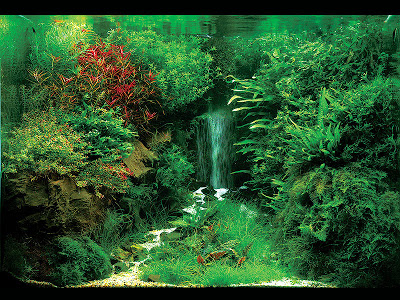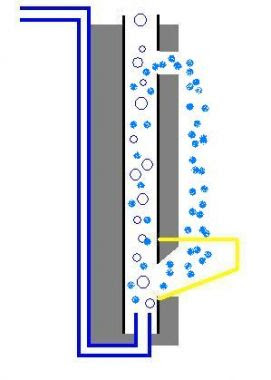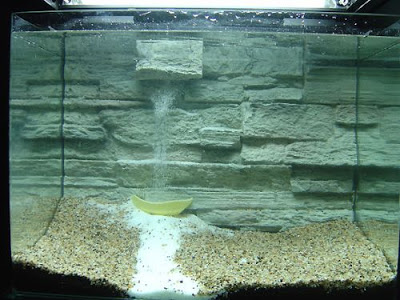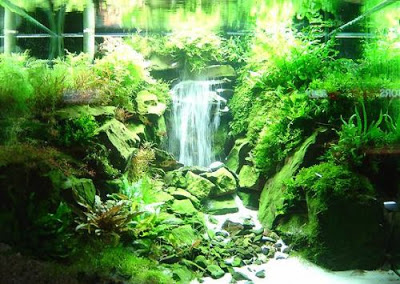I was curious as to how the tank above, which took World Ranking 7 in the ADA aquascaping contest this year, created the waterfall illusion. I had seen similar effects created by rising bubbles, but this seems to end before reaching the surface, meaning it is created using a different method (or there was a good deal of Photoshopping involved). However, an anonymous comment tipped me off to a website that explains exactly how it was created, and it is quite creative. To start off, the illusion is created with falling sand, not rising bubbles. However, bubbles still play an important role. See the diagram below:
This is a cross section of the “waterfall.” A tube and airstone blows bubbles up through a space behind the wall, and as a result, pulls water and tiny grains of sand (blue dots) from a sloped reservoir (sloped so that gravity pulls the sand down and into the bubble stream) up the narrow space. Once the grains reach a second opening, they forced out the second opening with the water current and fall back down the front of the wall back into the reservoir. Here’s a picture of what this looks like before any plants are added:
As you can see, very fine sand must be used for this to work. Additionally, where the sand falls is affected greatly by other currents in the tank, and it will inevitably fall outside of the reservoir. This means this effect is not the most practical for everyday use, as using it with a filter would probably blow the falling sand everywhere else in your tank. I’m sure much tweaking and adjusting is necessary to find the best type of sand suited for this application, and what size space behind the wall works best. How the sand is ejected from the top of the bubble column is also probably a problem area that requires a lot of attention and adjustment. It’s hard to tell from the diagram, but the bubble column space most likely extends above the water line. This forces the water pulled up by the bubbles out the sand-ejection opening. Otherwise, the sand would continue to follow the current of bubbles and water up and out the top of the column (and you’d have a messy volcano effect instead of a waterfall!). The final effect, if done correctly, looks absolutely stunning in pictures.




